Spring Color, Spring Greens
It seems like lots of us have experienced crazy weather lately, including tornadoes and quasi-typhoons. Where I live, we keep oscillating between turtleneck weather and shorts weather, with the occasional torrential downpour. Nevertheless, there are undeniable signs of spring. All my favorite purple flowers are in bloom: wisteria, ceanothus, and tibouchina. And, oh, the tulips! Here are some pictures of gardens in my neighborhood.
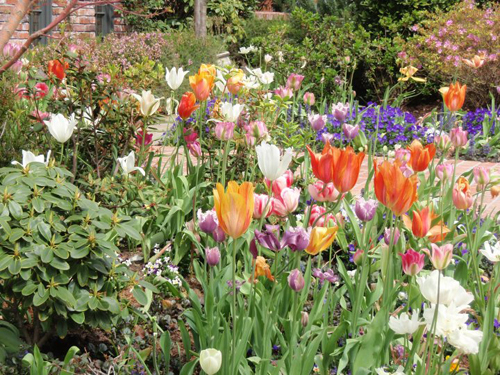
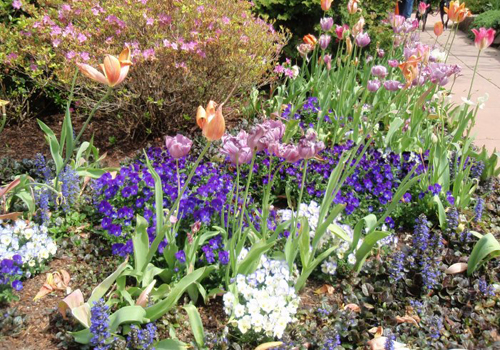
Can you spot my two dogs?! They weren't supposed to be in there, and I didn't notice immediately that they had somehow inserted themselves into one photo!
Even the shades of green are thrilling right now, looking fresh and vibrant this early in the year. Here are two Japanese maples in my garden:
Ah, Japanese maples! You knew I would eventually mention something related to Japan, right?!
You'll find both the Japanese language and more vegetation in this charming haiga (俳画, はいが) by Sakuo Nakamura. Incidentally, 俳画 combines 俳句 (はいく: haiku) with 画 (ガ: picture), so it's a "haiku picture."
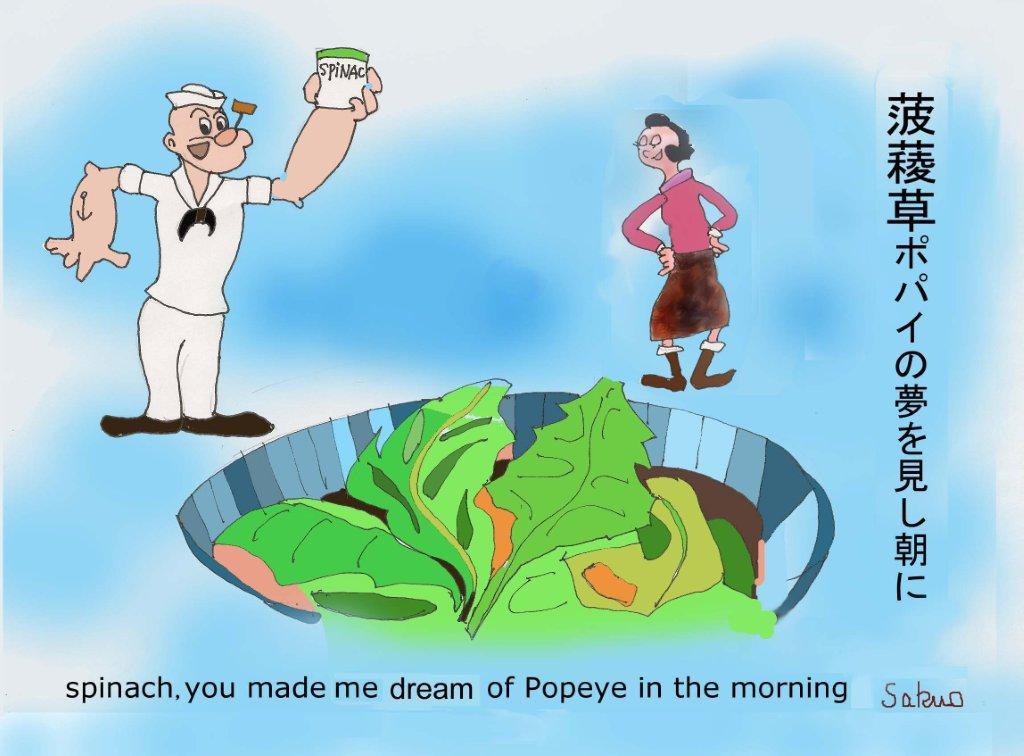
I adore both the drawing and the poem. Most of all I love that the haiku contains four instances of 艹. Three of them come in a row, thanks to the first word (which starts with two non-Joyo kanji):
菠薐草 (ほうれんそう: spinach) spinach + spinach + grass
By the way, here's the way to exclaim that there are as many as three in a row:
3つも連続しています!
連続 (れんぞく: in a row; successive)
As you may be aware, 艹 is the "grass" radical, which almost always appears on top of a kanji. The radical in that position is called 草冠 (くさかんむり). You probably recognize 草 (ソウ, くさ), as we just saw it in 菠薐草. Whereas 菠薐草 (ほうれんそう) features its on-yomi, the kun-yomi comes into play in 草冠 (くさかんむり).
For more on the meaning of 冠, see "Radical Positions" in Radical Terms. And for more on 艹, see Radical Note 140: The "Grass" Radical.
As to the fourth instance of 艹 in the haiku, I'm referring to 夢 (ゆめ: dream). Etymologically, this kanji doesn't quite count as "grassy." The topmost part of 夢 once had a different shape and meant "cover." But that doesn't matter to me, because I find it thrilling to see such a large gathering of 艹 in one small place. When the haiku is horizontal, all these radicals pop out as if they were blades of grass in a lush lawn that's just waiting to be mowed!
菠薐草ポパイの夢を見し朝に
spinach, you made me dream of Popeye in the morning
見る (みる: to see, shown here in an archaic form); 朝 (あさ: morning)
This haiku will have me dreaming of the "grass" radical!
One more note about ほうれんそう. Even though it primarily means "spinach," it's also a common workplace acronym that combines the first parts of these words:
ほうこく (報告: reporting)
れんらく (連絡: keeping in touch)
そうだん (相談: consulting)
Someone who fails to communicate about important topics is lacking in ほうれんそう. Perhaps the fault lies in the use of hiragana; when you take away "grass" radicals and kanji, everything goes to seed!
This discussion of grass, greens, and flowers has been fairly colorful. To add more color to your life, check out the new essay 1989 on 巾 (cloth, towel; width). It features several photos of cheerful fabrics, all Japanese or inspired by Japanese dyeing techniques. Here's a preview:
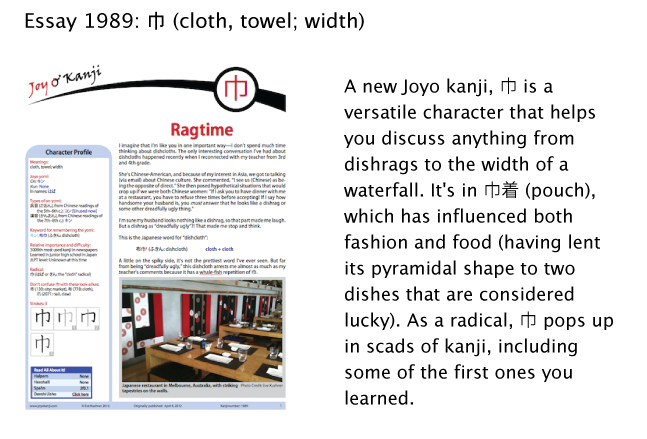
Also be sure to check out the new iPhone/iPad version of The Kodansha Kanji Learner's Dictionary. That book has been an invaluable part of my kanji life, and I'm sure the electronic version will prove just as indispensable. In fact, Jack Halpern says it's even easier to use than the print version. Here's more information about the release. Halpern has been quite helpful to Joy o' Kanji, so I'm happy to return the favor by spreading the word.
Have a great weekend. To help you celebrate whatever you're celebrating (perhaps just the beauty of spring!), here are a few more flowers just for you!

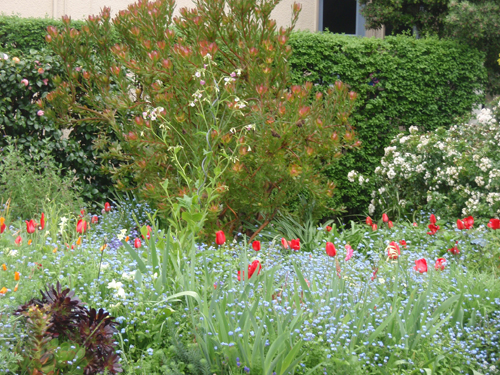
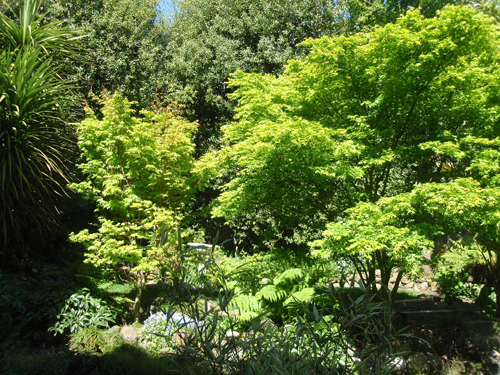
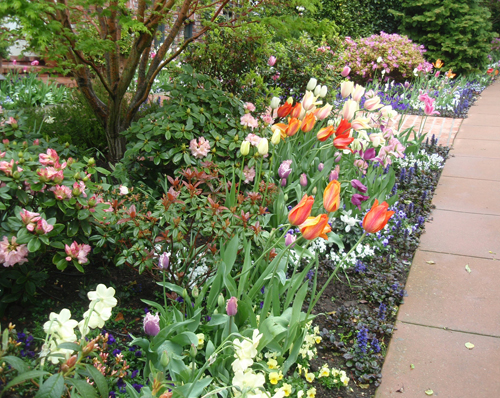
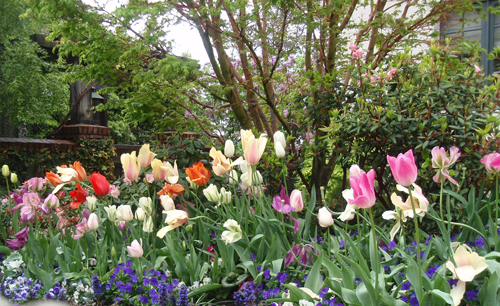
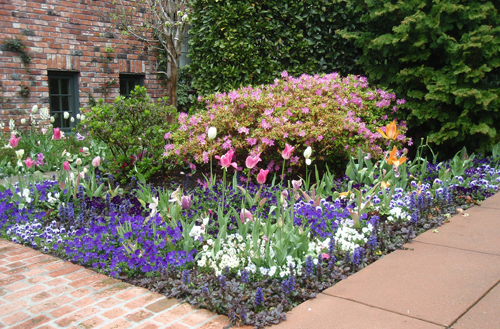
Comments